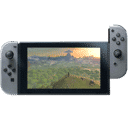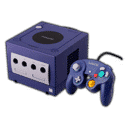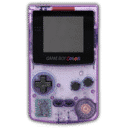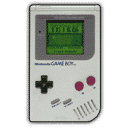
Summary:
About five years after Crash Team Racing Nitro-Fueled, a short-lived social banner from Beenox ignited fresh hopes for a new kart racer. The art showed Crash driving a kart while using the updated look from Crash Bandicoot 4—an eye-catching detail, since that design came after Nitro-Fueled. Screenshots spread fast, the banner vanished, and speculation roared back to life. At the same time, multiple outlets reported that Netflix is exploring an animated Crash series, hinting at a broader push around the character. Here’s the grounded view: the banner is real, removal is documented, and the Netflix chatter is still unconfirmed but widely reported. None of this equals an announcement, yet the mix of signs is worth watching. Below, we walk through what was seen, why the Crash 4 model matters, how timing lines up with typical reveal windows, and which scenarios make the most sense—from a full sequel to a modernized Nitro-Fueled update. You’ll find realistic expectations, platform considerations, and a wishlist shaped by Nitro-Fueled’s strengths and pain points—so you can stay excited without setting yourself up for disappointment.
Updated Crash Bandicoot Racing Artwork
Hype didn’t appear out of thin air; it started with a Beenox banner celebrating the studio’s 25th anniversary. Among the collage, fans spotted Crash behind the wheel of a kart, and crucially, the model looked like Crash Bandicoot 4’s updated design. That detail bridged two eras: Nitro-Fueled’s 2019 base and Crash 4’s later visual identity, suggesting new art rather than a simple throwback. The banner was quickly captured in screenshots, spread across community threads, and later removed—classic fuel for speculation. It matters because Crash racing has a devoted, vocal audience and because the franchise has been relatively quiet on the game front. When a developer with CTR history showcases fresh-looking kart imagery and then takes it down, people connect dots. The smart move is to record what’s confirmed, note what’s plausible, and avoid overstating anything that hasn’t been announced.
Community eyes and pattern recognition
Fans who have lived with these series for decades notice tiny tells—lighting, proportions, expression lines. Here, the immediate “that’s Crash 4’s look” chorus wasn’t random; it reflects familiarity with the visual upgrade that arrived after Nitro-Fueled. When multiple outlets echoed the same observation, the conversation shifted from “did we see that correctly?” to “what could that mean?” That pivot is where expectations need guardrails, because fresh art could imply several different projects—not all of them a brand-new sequel.
Crash is a nostalgia magnet, kart racers are evergreen, and social banners are easily shareable. Combine those with a removal that people can point to, and you get a perfect rumor storm. None of that equals confirmation, but it explains the tempo at which the chatter accelerated.
What the banner actually showed and why the model choice matters
The central point wasn’t simply “Crash in a kart”—we’ve all seen that. It was the Crash 4 model seated in the driver’s spot. Using the newer design narrows the possibilities: it is unlikely to be a straight reuse from Nitro-Fueled marketing. That doesn’t prove a sequel, of course, but it does make “new art” the baseline assumption. New art can serve many purposes—pitch decks, internal milestones, anniversary celebration pieces, or preparations for external campaigns. For fans, the model choice raises the ceiling of plausible outcomes because it naturally invites the question: why render new kart art if nothing is cooking?
Reading visual signals without overcommitting
It’s tempting to assign meaning to every pixel. Resist that urge. Consider intent: a studio celebrating itself might create cohesive art that unifies franchises it touched, updated to the current look of the character for consistency. At the same time, teams don’t typically spend time compositing high-fidelity new renders unless there’s a reason. The truth sits between those poles: it’s meaningful enough to watch, not strong enough to declare.
The Crash 4 aesthetic as a continuity bridge
Crash 4’s style has become the franchise’s modern face. If the brand is being positioned for new beats—on screens or in stores—keeping art consistent with that look makes sense. That consistency is exactly why fans’ antennae went up when the kart image matched the newer design language.
Why the banner was removed and how that affects expectations
Removal is gasoline on the rumor fire. Sometimes it’s housekeeping—art wasn’t approved for that context, or rights placement and credits weren’t finalized. Sometimes it’s because a reveal plan exists and any early hint throws off timing. Either way, removal does not automatically equal “confirmed sequel,” but it does justify paying attention. For expectations, treat removal as a “keep your calendar open” nudge, not a promise. It means stakeholders noticed the reaction, and timelines—if any—will be managed more tightly from here.
How removals have played out in the past
Across the industry, pulled banners, product descriptions, or ratings board entries have sometimes preceded announcements, and other times led nowhere. The lesson: it’s a signal, not a guarantee. You can be excited without building a castle on a single brick. Publishers and platform owners prefer coordinated beats—teasers, reveals, trailers, then hands-on. If a studio post creates noise too early, it risks blurring those beats. Pulling it down can be as much about restoring sequencing as hiding a secret.
How this ties into broader Crash activity, including Netflix reports
Separate from the banner, multiple outlets reported that Netflix is exploring an animated Crash series. Some early pieces pointed to WildBrain, the studio behind Sonic Prime, while follow-up coverage noted uncertainty about that involvement. Regardless of the exact studio, the swirl of reporting suggests Crash is in conversations beyond games. That matters because new shows often dovetail with renewed merchandising and—sometimes—fresh game activity. It’s not cause and effect, but it is a supportive backdrop that makes a racing revival feel more plausible than it did a year ago.
Connecting dots: coordinated pushes vs. happy coincidences
Companies love a synchronized moment: screen projects, game updates, retail promotions, and social stunts landing within a shared window. Even if the banner was only celebratory, the overlap with TV chatter paints a picture of a brand ready for primetime again. If you’re an optimistic fan, this is the cluster of signs you were waiting for—just remember that not every cluster becomes a constellation.
An animated series puts Crash in front of households who haven’t touched a controller in years. That visibility can convert to interest in a racer, especially if the show leans into colorful, readable action that mirrors kart-style energy. The audience flows both ways when the tone aligns.
Possible scenarios: sequel, upgrade, or simple celebration art
Three scenarios fit the evidence. One: a true sequel that builds on Nitro-Fueled with new tracks, modern netcode, and a cleaner progression model. Two: a current-gen upgrade for Nitro-Fueled packaged with bonus content, quality-of-life fixes, and platform-specific features. Three: an internal or celebratory image with no shipping product attached. Today, all three are on the table. The banner’s existence nudges the first two upward; the removal keeps everyone guessing.
Signals to watch in the months ahead
Watch for ratingsboard listings, merchandise leaks, soundtrack credits, and developer hiring pages mentioning multiplayer racing or physics. Trademark renewals alone aren’t decisive; production-adjacent breadcrumbs tend to be stronger. If a reveal is planned, expect a teaser to land at a tentpole moment—often a show with wide reach and holiday-adjacent buzz.
A sequel means systems-level changes and new tracks at scale. An upgrade leans on the solid core but fixes friction points. Celebration art means no release, but it still signals that Crash remains part of the studio’s identity—which keeps the door open.
What a modern Crash racer would likely prioritize on current hardware
Clarity and feel come first. On today’s consoles and handheld-capable devices, stable frame pacing, crisp readability, and tight input response beat raw effects. Expect smarter dynamic resolution, faster loading, and robust rollback or high-quality dedicated servers for smoother online. Cosmetic density can rise without sacrificing track visibility; the art team’s task is to make chaos legible. If cross-platform play is included, the community stays lively longer, which matters more than marginal visual features.
Handheld play and flexible sessions
Short, satisfying races are a perfect fit for portable modes. Snappy matchmaking, reconnect options, and ghost-race practice keep momentum when you only have a few minutes. The UX should trim every extra tap between “queue” and “go.”
Accessibility and approachability
Assist options for steering, camera, and item aim help newcomers, while granular toggles let veterans stay fully manual. Clear audio cues and color-blind friendly UI make competitive moments fairer. The best racers invite everyone in without flattening the skill curve.
Lessons from Nitro-Fueled: what worked, what must change
Nitro-Fueled nailed the sensation of speed, drift-boost rhythm, and track personality. It also delivered generous nostalgia with modern polish. Pain points? Progression economy and the handling of microtransactions after launch drew pushback. If a new release arrives, transparent earn rates, fair unlock paths, and a clean separation between convenience and advantage are non-negotiable. Seasonal structures should reward regular play without FOMO spikes that burn players out.
Netcode, matchmaking, and party tools
Online must feel sturdy. That means good matchmaking ranges, meaningful penalties for rage-quits, and solid party management for friends to stick together across lobbies. Leaderboards need strong anti-cheat, and time-trial systems should celebrate legitimate mastery. Time-limited events work best when they’re simple, fun, and respectful of schedules. Rotate modes, remix tracks, and offer earnable cosmetics that feel worth the laps—without locking identity behind a credit card.
Marketing and timing: how announcements typically roll out
Studios tend to stack reveals near major showcases. A fast teaser, then a gameplay trailer, followed by hands-on previews is the classic path. For a racer, timed betas help stress-test online and teach the meta early. If a reveal is coming, it will likely sit where attention is already focused, rather than in a random week. Until then, the lack of official word is the most honest data point—curiosity acknowledged, promises withheld.
How removal affects the runway
When something sparks early, teams sometimes shift to “radio silence” to regain control. That’s normal. If a beat was planned, it won’t be moved just because social saw a hint; big beats depend on many partners. Silence is not a no—it’s project management.
Set playful, flexible expectations. Enjoy the speculation, track reputable reports, and avoid treating any single breadcrumb as destiny. That mindset keeps the fun front and center.
Platform strategy: Xbox ownership, Switch 2 momentum, and PC
Ownership sits with Microsoft after the Activision acquisition, which influences platform and marketing calculus. Cross-platform reach still makes sense for a mascot racer—especially where handheld play is thriving—while Game Pass can supercharge player counts on day one. On the handheld side, performance targets should aim for steady frame rates and low input latency; on living-room devices, image stability and responsive 60fps modes would earn goodwill. PC support widens communities and extends lifecycle via creators and leagues.
Cross-play and cross-progression
Let people race together anywhere and keep unlocks in sync. That’s the modern baseline fans expect, particularly for a series with global nostalgic pull. It also cushions content cadence—bigger pools mean healthier matchmaking.
Crash thrives on slapstick charm. Skins, stickers, and karts that riff on classic villains and levels are instant crowd-pleasers. The trick is to keep readability intact so competitive clarity never suffers.
Fan expectations vs. reality: reading signals without overreaching
You can be hopeful and disciplined at the same time. The verified facts: a Beenox anniversary banner briefly showed Crash in a kart using the Crash 4 look, the banner was removed, and multiple outlets have reported Netflix activity, though official confirmation remains pending. That is enough to justify attention and discussion, not enough to assert a new game. The healthiest stance is “intrigued, patient, tracking.”
Why patience pays off
Racers live or die by feel and online reliability—things that benefit from careful development and measured rollouts. If a reveal comes, it’s better after systems are ready to shine than in a rush to meet chatter. The last thing anyone wants is a wobbly first impression.
Concrete listings, official teases, and developer commentary move the needle. Until then, treat every new social post as a clue, not a conclusion.
If it happens: features that would really land with players
Track craft that rewards mastery without punishing newcomers, robust online with cross-play, thriving time trials with meaningful ghosts, and a progression model that respects time are the pillars. Add a track editor or remix system and you unlock community creativity for years. Seasonal drops with clever event tracks keep the loop fresh without bloating the grind. And yes—sound design matters. Crash’s chaotic energy, satisfying drift squeals, and punchy item cues make wins feel earned.
Accessibility, discovery, and social glue
Smart onboarding teaches drift timing fast. Placement-based difficulty assists help growing players stay in the pack. Clubs and simple party tools make it easy to hop in with friends, while creator-friendly spectator and replay tools amplify the scene across streams and short-form clips.
Honor classic tracks and characters, but push into new biomes and hazards that suit modern readability. That balance is what made Nitro-Fueled sing; doubling down would keep veterans happy while welcoming new drivers.
If it doesn’t: healthy ways to enjoy the series now
If the banner winds up being only a celebration image, there’s still plenty to enjoy. Nitro-Fueled remains a tight, satisfying racer with a meta worth mastering. Crash 4 stays a stylish, challenging platformer for players who like precision. And if an animated series lands later, it becomes a new doorway for friends and family to discover why Crash’s chaos is so lovable. Either way, the franchise is part of the conversation again—and that alone is a win for fans who never stopped asking for more laps.
Conclusion
The banner happened, it showed Crash’s newer look in a kart, and it was removed. Those facts justify attention without stretching into certainty. In parallel, multiple outlets report that Netflix is exploring an animated Crash series, adding momentum to the idea that the brand is gearing up for something. Whether that “something” is a new racer, a modernized Nitro-Fueled, or simply cross-media celebration, the smartest play is to stay curious, keep expectations flexible, and ask for the features that matter most: stable performance, fair progression, lively online, and that unmistakable Crash personality exploding from every corner. If the green light is real, you’ll feel it—loud, timed, and ready to race.
FAQs
- Did Beenox really show Crash in a kart on its banner?
- Yes—fans captured screenshots of a 25th anniversary banner featuring Crash in a kart, using the Crash 4 look, before it was taken down. That’s the verified starting point for the current buzz.
- Does the banner confirm a new Crash racing game?
- No. It suggests new art and raises possibilities, but it is not an announcement. Treat it as a noteworthy signal rather than proof of a sequel.
- Is Netflix actually making a Crash animated series?
- Multiple outlets reported that Netflix is developing a Crash series, with early claims of WildBrain’s involvement later questioned. Until Netflix confirms, consider it unannounced but widely reported.
- Could this be a next-gen update to Nitro-Fueled instead of a sequel?
- Absolutely possible. A modernized release with performance boosts, online improvements, and new content would fit the clues without requiring a full sequel.
- What should fans watch for next?
- Look for official teases, ratings board filings, developer comments, or timing around major showcases. Those are stronger indicators than social art alone.
Sources
- Rumour: New Crash Bandicoot Racing Artwork Has Some Fans Excited, Nintendo Life, November 9, 2025
- Xbox Hasn’t Given Us A Crash Bandicoot Game Yet, But Beenox Might Be Working On Something, Pure Xbox, November 6, 2025
- Crash Team Racing Remaster Studio May Have Shared New CTR Tease, TheGamer, November 6, 2025
- Beenox Sparks Speculation of a New Crash Team Racing Game Following Banner Update, Twisted Voxel, November 6, 2025
- Rumor: Updated Crash Bandicoot Racing Artwork Fuels Speculation For New Entry, NintendoSoup, November 10, 2025
- An Animated Crash Bandicoot Show Is Reportedly In The Works At Netflix, GamesRadar, October 28, 2025
- Netflix Is Reportedly Making A Crash Bandicoot Series And He Better Not Talk, Kotaku, October 27, 2025
- Crash Bandicoot Animated TV Series Coming To Netflix (Report), Polygon, October 27, 2025
- Beenox updated their twitter banner and it features Crash riding a kart…, Reddit (u/Jaccblacc203), November 2025
- Beenox is possibly teasing a new Crash Team Racing on their updated X banner, Reddit (r/GamingLeaksAndRumours), November 2025














